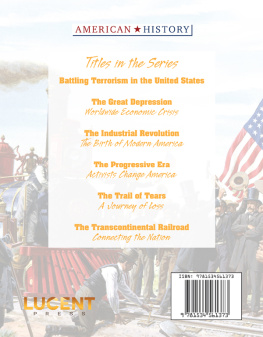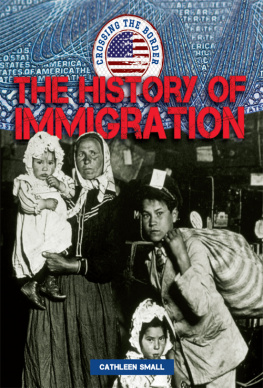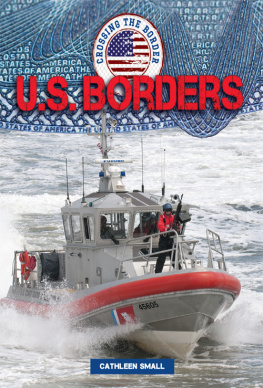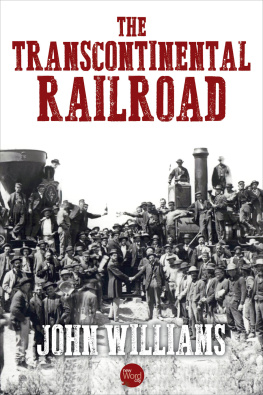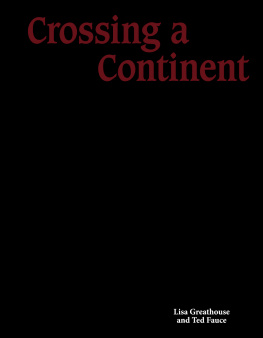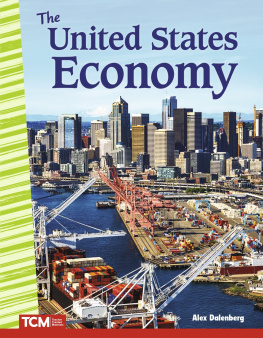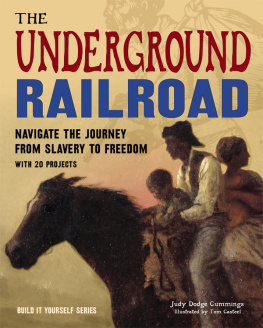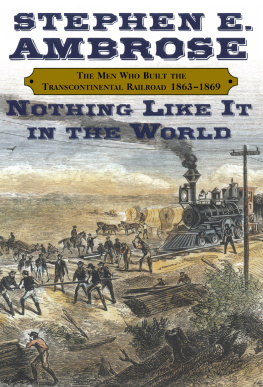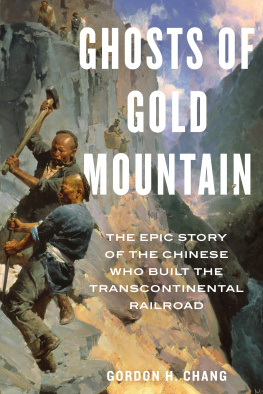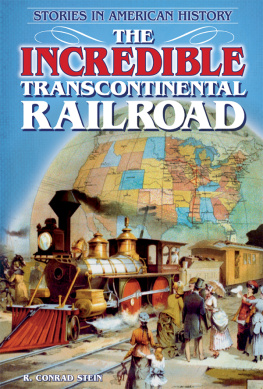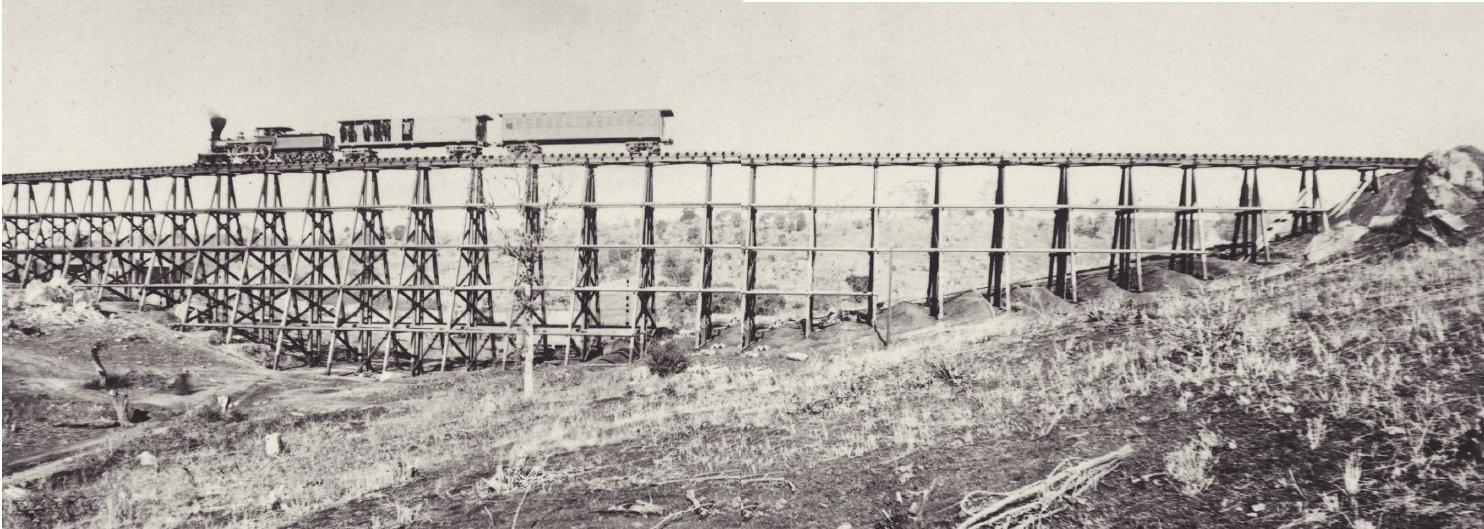Published in 2018 by
Lucent Press, an Imprint of Greenhaven Publishing, LLC
353 3rd Avenue
Suite 255
New York, NY 10010
Copyright 2018 Greenhaven Press, a part of Gale, Cengage Learning
Gale and Greenhaven Press are registered trademarks used herein under license.
All new materials copyright 2018 Lucent Press, an Imprint of Greenhaven Publishing, LLC.
All rights reserved. No part of this book may be reproduced in any form without permission in writing from the publisher, except by a reviewer.
Designer: Deanna Paternostro
Editor: Siyavush Saidian
Library of Congress Cataloging-in-Publication Data
Names: Harasymiw, Therese.
Title: The Transcontinental Railroad: connecting the nation / Therese Harasymiw.
Description: New York : Lucent Press, 2018. | Series: American history | Includes index.
Identifiers: ISBN 9781534561373 (library bound) | ISBN 9781534561380 (ebook)
Subjects: LCSH: Pacific railroads--History--Juvenile literature. | Railroads--West (U.S.)--History--Juvenile literature. | Railroads--United States--History--Juvenile literature. | Railroads--United States--Design and construction--History--Juvenile literature. | United States--Territorial expansion--Juvenile literature.
Classification: LCC TF25.P23 H315 2018 | DDC 385.097809034--dc23
Printed in the United States of America
CPSIA compliance information: Batch #BS17KL: For further information contact Greenhaven Publishing LLC, New York, New York at 1-844-317-7404.
Please visit our website, www.greenhavenpublishing.com. For a free color catalog of all our high-quality books, call toll free 1-844-317-7404 or fax 1-844-317-7405.
Contents
Foreword
Setting the Scene: A Timeline
Introduction:
A Railway from Coast to Coast
Chapter One:
A Sprawling Nation
Chapter Two:
Plotting a Course Across the Continent
Chapter Three:
A Way to Preserve the Union
Chapter Four:
The Union Pacific Heads West
Chapter Five:
The Central Pacific Heads East
Epilogue:
Completely Transcontinental
Notes
For More Information
Index
Picture Credits
About the Author
Foreword
T he United States is a relatively young country. It has existed as its own nation for more than 200 years, but compared to nations such as China that have existed since ancient times, it is still in its infancy. However, the United States has grown and accomplished much since its birth in 1776. What started as a loose confederation of former British colonies has grown into a major world power whose influence is felt around the globe.
How did the United States manage to develop into a global superpower in such a short time? The answer lies in a close study of its unique history. The story of America is unlike any otherfilled with colorful characters, a variety of exciting settings, and events too incredible to be anything other than true.
Too often, the experience of history is lost among the basic facts: names, dates, places, laws, treaties, and battles. These fill countless textbooks, but they are rarely compelling on their own. Far more interesting are the stories that surround those basic facts. It is in discovering those stories that students are able to see history as a subject filled with lifeand a subject that says as much about the present as it does about the past.
The titles in this series allow readers to immerse themselves in the action at pivotal historical moments. They also encourage readers to discuss complex issues in American historymany of which still affect Americans today. These include racism, states rights, civil liberties, and many other topics that are in the news today but have their roots in the earliest days of America. As such, readers are encouraged to think critically about history and current events.
Each title is filled with excellent tools for research and analysis. Fully cited quotations from historical figures, letters, speeches, and documents provide students with firsthand accounts of major events. Primary sources bring authority to the text, as well. Sidebars highlight these quotes and primary sources, as well as interesting figures and events. Annotated bibliographies allow students to locate and evaluate sources for further information on the subject.
A deep understanding of Americas past is necessary to understand its present and its future. Sometimes you have to look back to see how to best move forward, and thats certainly true when writing the next chapter in the American story.
Setting the Scene: A Timeline
Introduction
A RAILWAY FROM COAST TO COAST
T he date was May 10, 1869. An area of plains near Salt Lake City, Utah, named Promontory Summit was the location of the historic occasion. Two railroad crews had met at the locale and were about to join nearly 1,800 miles (2,897 km) of track they had laid across the United States, connecting the western and eastern halves of the nation for the first time. This railwaythe transcontinental railroadwas almost finished. Officials drove a golden spike into the final tie.
Six years prior, the railroads had begun laying track with equally celebratory fanfare. The Central Pacific Railroads work officially began in January 1863, in Sacramento, California. Governor Leland Stanford was one of several speakers to mark the occasion. He predicted the venture would strengthen the ties of nationality, and advance with giant strides the prosperity of the State and of our country.
Both these observances were merely ceremonial, as the two railroads were not yet equipped or staffed enough to begin their work just yet. This was no ordinary track to lay, and its obstacles were many. Modern-day engineers assert that the transcontinental railroad was the most complex construction project that any country in the world had attempted in the 19th century. It required detailed planning and massive amounts of money, equipment, and manpower. Though it would take years, the completed railroadwhen connected to the existing eastern railroadsyielded the enormous impact on the nation that many had forecast and anticipated. It also forever altered the physical and cultural terrain across the central and western United States.
This photograph was captured at the celebration of the completion of the transcontinental railroad in Promontory Summit, Utah.
Crossing the Continent
The transcontinental railroad was a joint effort of two separate railroad companies. The Union Pacific built 1,086 miles (1,748 km) of track heading west from Omaha. The Central Pacific laid 690 miles (1,110 km) of rails heading east from Sacramento. After years of hard, exhausting, and sometimes dangerous labor, workers for the two railroads connected the two lines in Promontory Summit, Utah. For the first time, the nation had a continuous railroad system stretching all the way across the North American continent.

